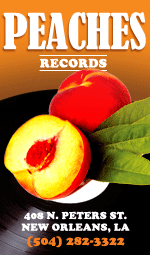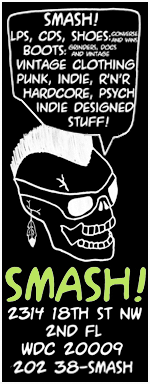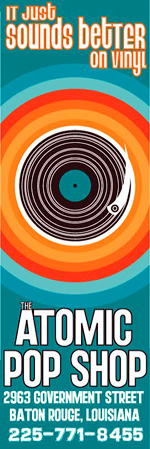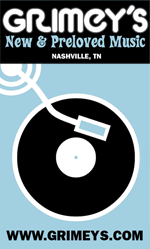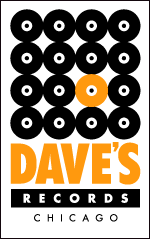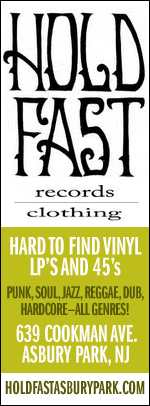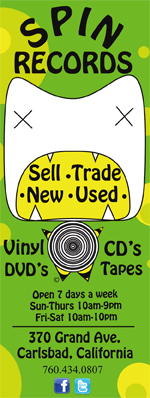
VIA PRESS RELEASE | Oscilloscope Laboratories in conjunction with MVD Entertainment Group announce the release of Not Not Jazz via video on demand, Blu-ray, and DVD on August 9th.
 The documentary, directed by Jason Miller and produced by Tyler Davidson, Jim Stark, and Elie Weiss, is an in-depth look at the unique and wholly improvisational creative process of the revolutionary “avant-groove” band Medeski Martin & Wood, as they endeavor to record a new album at the famed Allaire Studio, twenty-five years after their formation. The film premiered at the Woodstock Film Festival—not far from where the documentary was filmed in New York’s Hudson Valley—and most recently screened during the Big Ears Festival in Knoxville, TN this past spring.
The documentary, directed by Jason Miller and produced by Tyler Davidson, Jim Stark, and Elie Weiss, is an in-depth look at the unique and wholly improvisational creative process of the revolutionary “avant-groove” band Medeski Martin & Wood, as they endeavor to record a new album at the famed Allaire Studio, twenty-five years after their formation. The film premiered at the Woodstock Film Festival—not far from where the documentary was filmed in New York’s Hudson Valley—and most recently screened during the Big Ears Festival in Knoxville, TN this past spring.
Director Jason Miller notes: “I am deeply grateful to have met John, Billy, and Chris and to have been entrusted with documenting their process as musicians and exploring their personal lives. It’s been a long and arduous journey to get the film made and released, and I learned a lot from them along the way. It’s my hope that everyone who watches the film will take something away as well.”
Medeski Martin & Wood is a group that effortlessly straddles the gap between avant-garde improvisation and accessible groove-based jazz. They have simultaneously earned standing as relentlessly innovative musicians and as an enormously popular act. Emerging out of the New York Downtown scene in the early ’90s, MMW soon set out on endless cross-country tours before returning home to Manhattan to further refine their sound through myriad influential experimentations.


 Where to turn in times like these? When you’ve got a foot in the grave and your head in the oven? Exile on Main Street, naturally. It’s as beat down an LP as ever you’ll hear; Mick, Keith and Company are torn and frayed and have shit on their shoes and the whole album sounds like it was recorded in a sub-basement of Hell.
Where to turn in times like these? When you’ve got a foot in the grave and your head in the oven? Exile on Main Street, naturally. It’s as beat down an LP as ever you’ll hear; Mick, Keith and Company are torn and frayed and have shit on their shoes and the whole album sounds like it was recorded in a sub-basement of Hell.
 If you’re going to chit chat with an individual about this topic, then Corey duBrowa should be at the top of your list. After years of writing about music for publications like Rolling Stone and GQ, he no doubt commands a strong understanding of the subject matter. That’s not to mention the other exciting side of his career: a world of global corporate communications for many brands and companies that would be familiar to you. Like all good communicators, he has focused his interest on a brand new book that he’s written exploring the format of the EP. It’s titled,
If you’re going to chit chat with an individual about this topic, then Corey duBrowa should be at the top of your list. After years of writing about music for publications like Rolling Stone and GQ, he no doubt commands a strong understanding of the subject matter. That’s not to mention the other exciting side of his career: a world of global corporate communications for many brands and companies that would be familiar to you. Like all good communicators, he has focused his interest on a brand new book that he’s written exploring the format of the EP. It’s titled, 


 They’re not going to be inducted into baseball’s Hall of Fame anytime soon, either. Hell, they only hit two homers over the course of their long career, and their lifetime batting average is in the .233 range. Forget about Cooperstown; these guys would be lucky to earn a spot on the bench of the 1962 New York Mets.
They’re not going to be inducted into baseball’s Hall of Fame anytime soon, either. Hell, they only hit two homers over the course of their long career, and their lifetime batting average is in the .233 range. Forget about Cooperstown; these guys would be lucky to earn a spot on the bench of the 1962 New York Mets.









 Behind Geddy, prog-metal bric a brac: 2012’s ping-ponging title track (
Behind Geddy, prog-metal bric a brac: 2012’s ping-ponging title track (


















